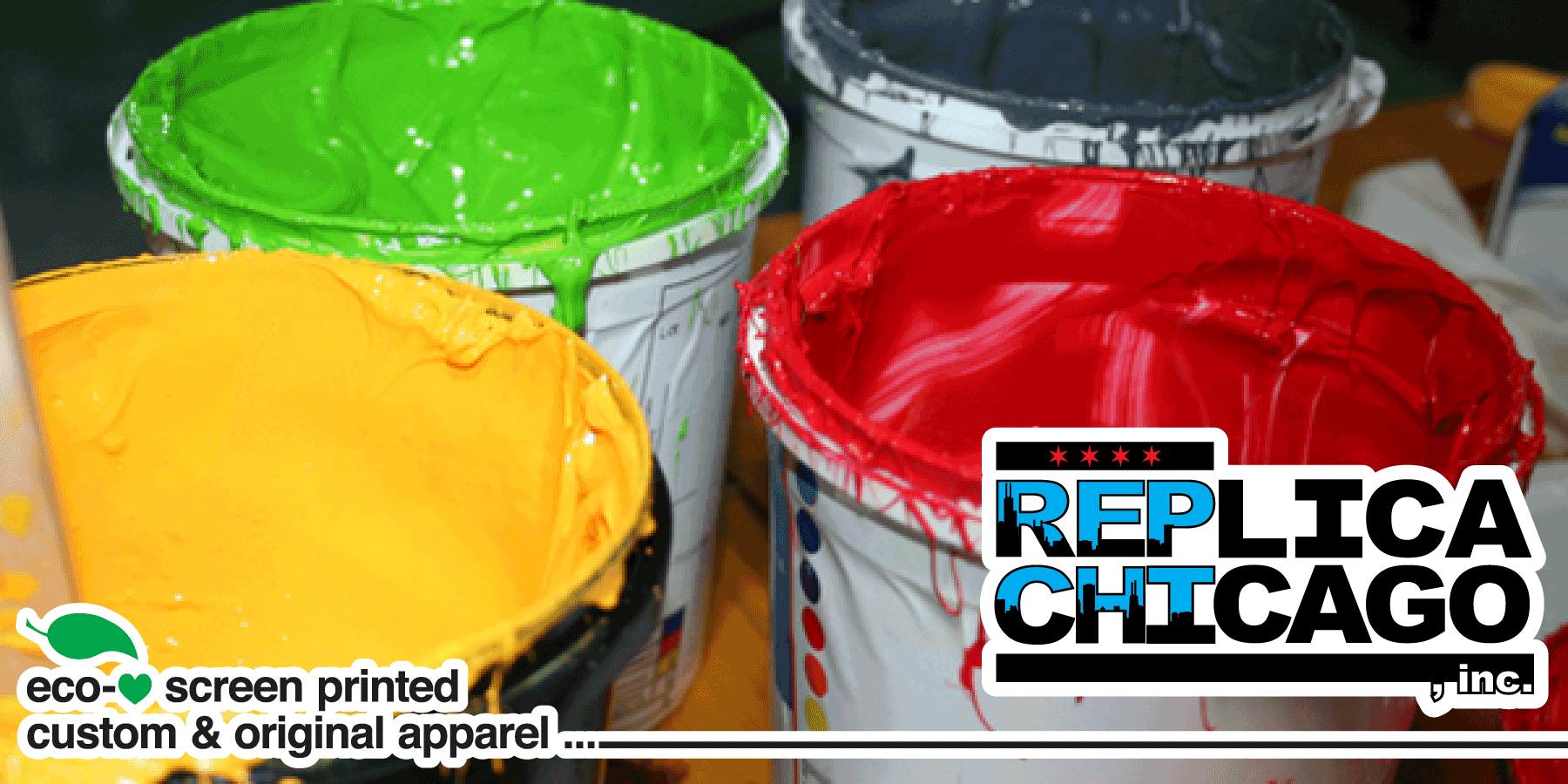Display Printing Uncovered: Every Little Thing You Need to Learn About Tee Shirt and Garment Printing Strategies
Screen printing is an interesting approach that incorporates art with method, offering countless opportunities for imagination. Ready to discover the necessary elements that make screen publishing an art form?
The Fundamentals of Screen Printing: How It Functions
When you plunge into display printing, you'll uncover it's both a scientific research and an art. At its core, screen printing involves producing a pattern, or display, that allows ink to pass with only in details locations.
Position the display over the textile, then make use of a squeegee to press ink with the display onto the garment. Each step is important, and mastering them will certainly boost your display printing skills, changing straightforward garments into distinct, meaningful pieces.
Types of Display Printing Techniques
As soon as you understand the basics of display printing, it's time to discover the various techniques that can raise your layouts. One preferred technique is typical screen printing, where ink is pressed via a stenciled display. This technique is excellent for bold, lively colors. There's water-based ink printing, which offers a softer feel and is environmentally friendly, however it calls for a various technique to treating.
One more choice is plastisol printing, known for its toughness and vibrant shades, making it a favored for several brand names. Experiment with halftone printing to develop gradient results and elaborate styles.
Crucial Devices for Display Printing
To attain magnificent outcomes in screen printing, having the ideal devices is fundamental. You'll need a durable display printing framework, which holds the mesh that transfers your layout onto the garment. Next off, invest in high-quality mops; these are important for using ink evenly throughout the screen.
Selecting the Right Inks and Products
When picking inks and products for display printing, you require to take into consideration the sort of ink that functions finest for your task. Consider material compatibility to assure your layouts look last and great long. Check out eco-friendly ink options to make your printing process extra lasting.
Types of Display Inks
Selecting the ideal display ink is essential for attaining lively, long lasting prints that satisfy your project's demands. There are several sorts of screen inks to take a look at. Plastisol ink is prominent for its convenience and convenience of usage, supplying outstanding color opacity on dark materials. Water-based ink, on the various other hand, offers a softer feeling and is green, making it ideal for those looking to reduce their environmental impact. Discharge inks remove dye from the textile, leading to a soft, classic appearance yet require details handling. Ultimately, specialty inks, such as glow-in-the-dark or metal, can include one-of-a-kind impacts to your layouts. Review your job needs and pick the ink that lines up finest with your preferred end result.

Material Compatibility Considerations
Recognizing textile compatibility is vital for achieving top quality screen prints, especially because different materials respond uniquely to different inks. When choosing inks, think about the textile type-- cotton, polyester, or blends. For cotton, water-based inks function well, supplying softness and breathability. Polyester, on the various other hand, often calls for plastisol inks for far better attachment and vibrant colors. If you're publishing on blends, you may require to use a mix of both types. Constantly examine your inks on sample material to ensure they stick effectively and maintain shade honesty. Additionally, keep in mind that material weight and texture can influence the last outcome, so choosing the appropriate ink and material combination is crucial for your job's success.
Eco-Friendly Ink Options
Environment-friendly inks are coming to be a popular option for screen printers that intend to decrease their ecological impact while maintaining top quality. When selecting inks, consider water-based inks, which are less hazardous and simpler to tidy up compared to conventional solvents. These inks bond well with fabrics, delivering vibrant outcomes without hazardous chemicals. You could additionally check out eco-solvent inks that make use of fewer unstable organic substances (VOCs), making them a much safer alternative for both your health and the world.
In addition, search for inks made from renewable sources, such as soy or vegetable-based options. By selecting the appropriate inks and materials, you'll not just develop spectacular designs but additionally add to a more sustainable printing process. Make the switch, and your prints will mirror your dedication to the setting!
Preparing Your Layout for Display Printing

Submit Format Needs
To assure your style looks sharp and vibrant on textile, you'll require to pay very close attention to submit layout requirements for screen printing. Start with vector files like AI or EPS, as they can be scaled without shedding top quality. If you make use of raster pictures, opt for high-resolution files, such as TIFF or PNG, ideally at 300 DPI. Stay clear of making use of JPEGs, as they can lose quality when resized. Make certain your design has a clear history to stop undesirable white edges on your prints. Keep shade settings in mind; CMYK is typical for display printing, so convert your RGB creates accordingly - screen printing kit. By following these guidelines, you'll establish your art work up for an effective print.
Shade Separation Methods
Color separation is an essential step in preparing your style for display printing, and understanding it can greatly boost your print high quality. You'll need to damage your style right into specific shades, as each color calls for a separate screen throughout printing. Start by identifying all the colors in your layout and create layers for each one. You can make use of software program like Adobe Photoshop or Illustrator click resources to isolate and separate shades efficiently. Be particular to save each layer as a different file, usually in a layout like TIFF or PSD. This accuracy not only assures precise shade depiction yet also improves the printing process. By taking note of color splitting up, you'll attain lively and expert results in your screen-printed garments.
Resolution and Size
Attaining the very best results in display printing starts with ensuring your style has the ideal use this link resolution and size. Ideally, your art work ought to be at least 300 DPI (dots per inch) for sharp, clear prints. Your last item might look pixelated and amateur. if you utilize reduced resolution.
When it comes to dimension, consider the measurements of your print area. Layout your artwork to match the final print dimension, preferably producing it in the real dimensions you'll be publishing. In this manner, you'll avoid any unanticipated scaling concerns.
Always inspect your design in both vector and raster styles. Vector graphics can be scaled without losing high quality, making them ideal for screen printing. Preparing appropriately will assure your style looks fantastic on every garment!
Step-by-Step Display Printing Refine
Screen printing is a dynamic process that enables you to create vivid designs on numerous surface areas. To start, you'll require a display, emulsion, and your picked ink. Initially, prepare your display by cleansing it extensively. Next, apply the emulsion evenly and let it dry in a dark location. As soon as completely dry, subject your screen to light with your layout put on it, which will certainly solidify the emulsion where the light hits, creating a pattern - screen printing kit.
After washing out the unexposed solution, your display prepares. Set it up on your printing surface and straighten your garment underneath it. Pour ink onto the display and make use of a squeegee to push the ink via the stencil onto the material. Raise the screen thoroughly and allow the print dry. Treat the ink using heat to guarantee longevity. That's it! You've effectively display printed your style.
Tips for Successful Screen Printing Projects
While you're diving into your screen printing projects, bear in mind that preparation is crucial to success. Begin by collecting all your materials-- inks, displays, garments, and mops. A tidy work space aids stop unwanted errors, so tidy up prior to you start.
Following, confirm your art work is high-resolution and appropriately sized for your garment. Test your screen for proper exposure and clean it completely to stay clear of smudges. When blending your inks, adhere to the producer's guidelines to achieve the appropriate consistency.
Throughout printing, apply also stress with your squeegee for consistent results. Don't rush; take your time to validate each print meets your requirements. After printing, allow your garments completely dry completely before taking care of or packaging them.
Finally, constantly maintain an example of your benefit future referral. By doing this, you can examine your progress and improve your methods with time. Happy look at this web-site printing!

Frequently Asked Concerns
For how long Does It Require To Establish a Screen Printing Work?
Establishing up a display printing task typically takes around thirty minutes to an hour. You'll prepare the displays, mix inks, and change journalism. The moment varies based on intricacy and experience, so remain arranged!
Can I Publish on Various Textile Enters Using the Exact Same Technique?
Yes, you can print on various material kinds utilizing the very same technique, however you'll need to change your inks and setups. Some textiles absorb ink in different ways, so trying out warranties the very best results for each and every product.
What Are Usual Mistakes to Prevent in Screen Printing?
When display printing, stay clear of usual blunders like using the wrong ink, overlooking appropriate direct exposure times, or avoiding pre-press checks. Always evaluate your setup and maintain tidy screens to ensure top quality outcomes each time.
How Can I Appropriately Clean and Maintain My Screen Printing Tools?
To correctly clean and preserve your display printing devices, you should frequently clean screens with proper solvents, examine squeegees for wear, and guarantee all devices are kept dust-free and dry. Consistency stops costly repair work and improves efficiency.
Is Display Printing Eco-friendly Compared to Various Other Methods?
Display printing can be extra eco-friendly than various other methods, particularly if you utilize water-based inks and eco-conscious products. By picking lasting supplies and methods, you minimize waste and lessen your effect on the earth.
Display Printing Uncovered: Whatever You Need to Know About T-Shirt and Garment Printing Strategies
At its core, display printing includes creating a stencil, or screen, that allows ink to pass via only in details locations. Placement the screen over the material, then make use of a squeegee to press ink via the display onto the garment. One preferred method is traditional display printing, where ink is pressed with a stenciled display.When picking inks and products for screen printing, you need to take right into account the kind of ink that functions best for your job.